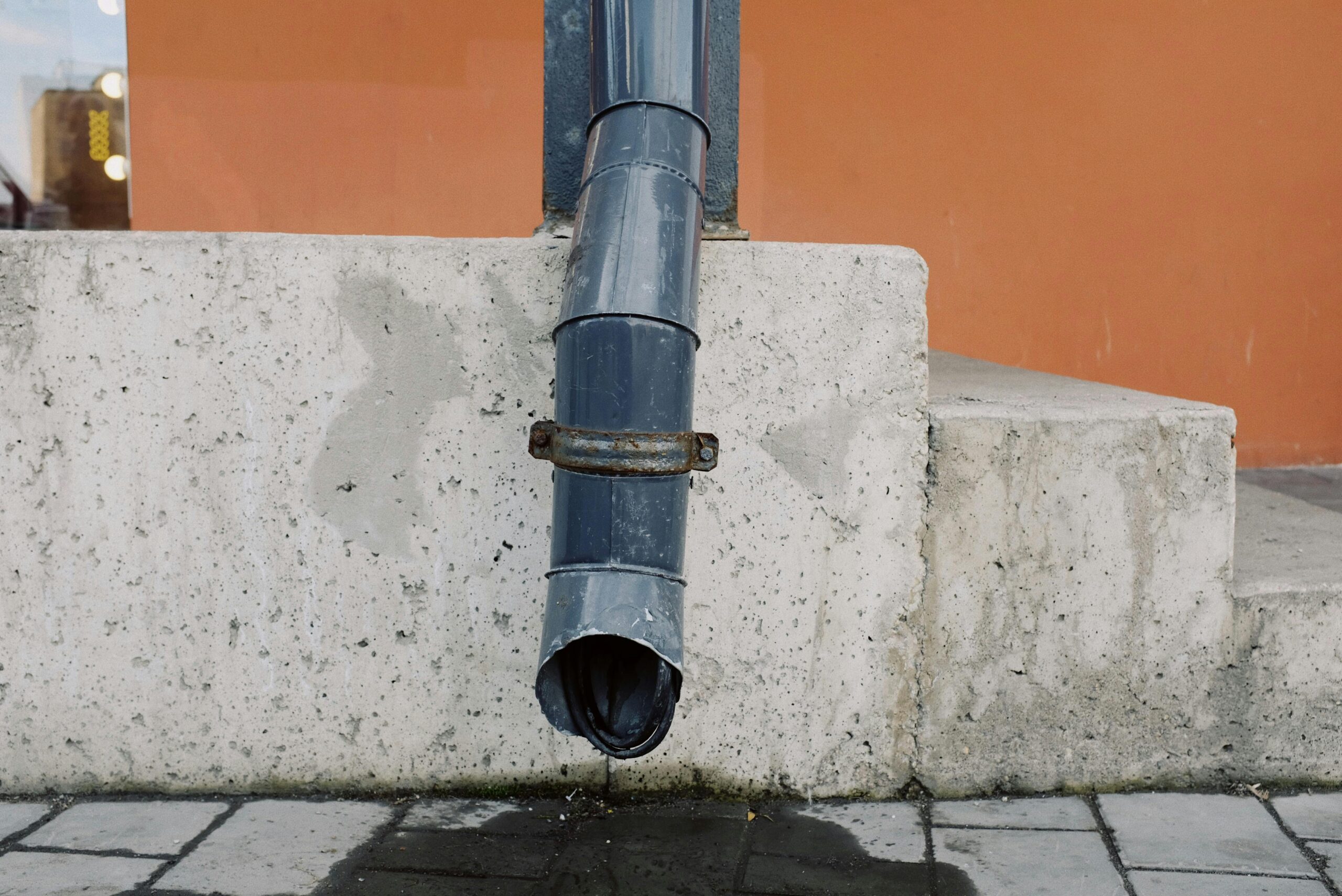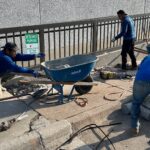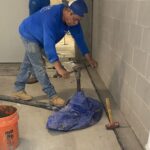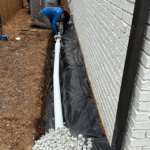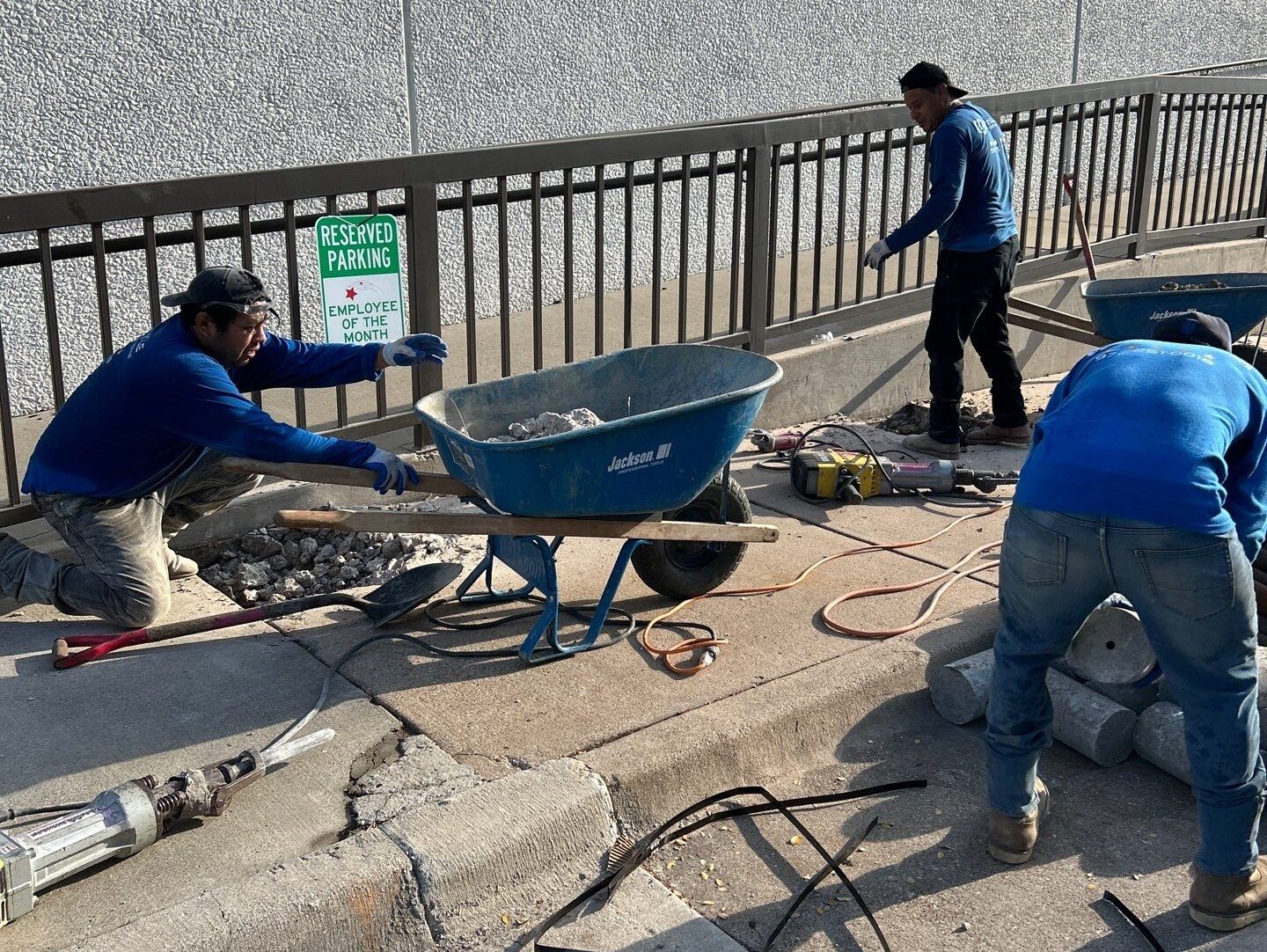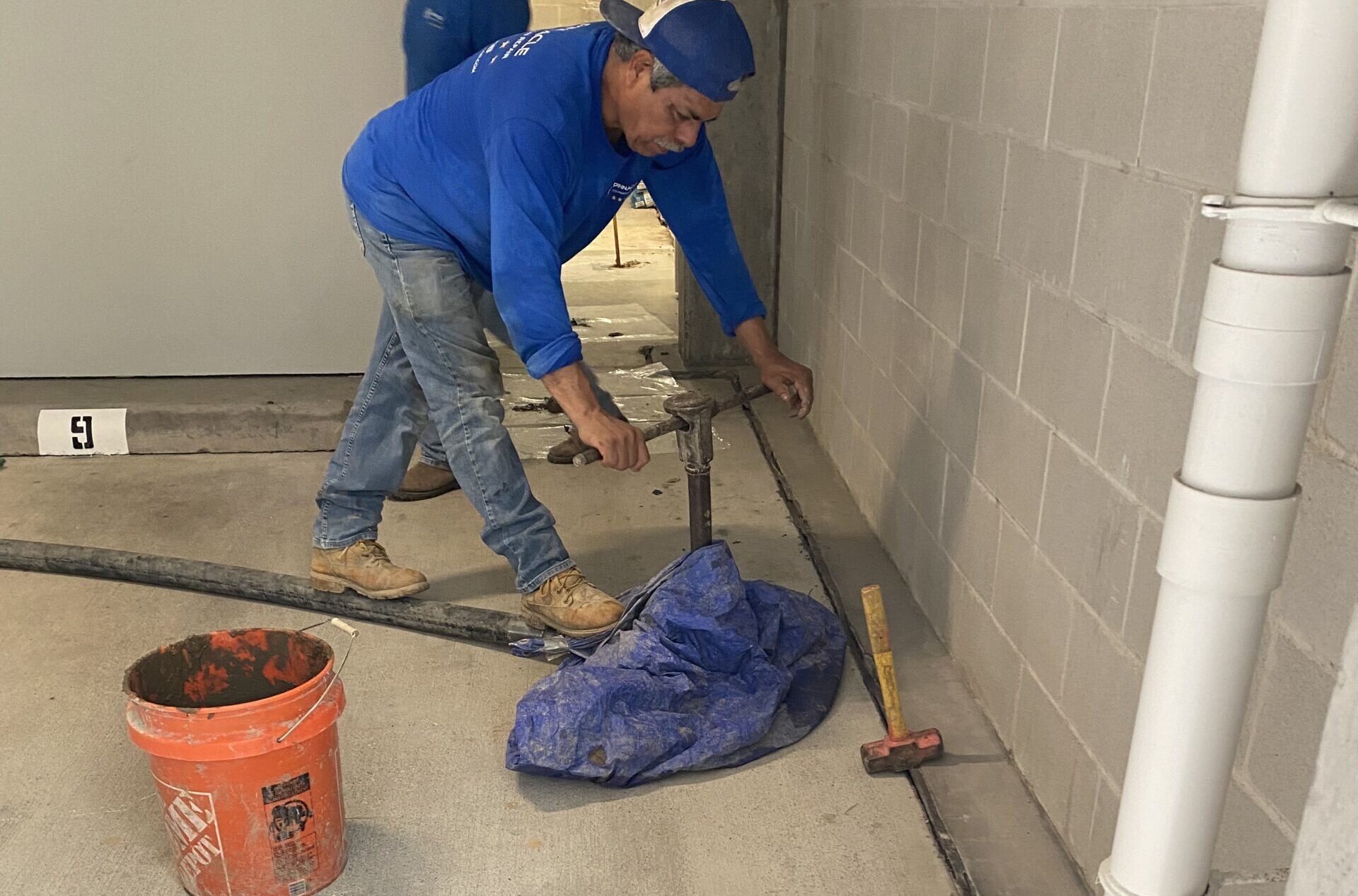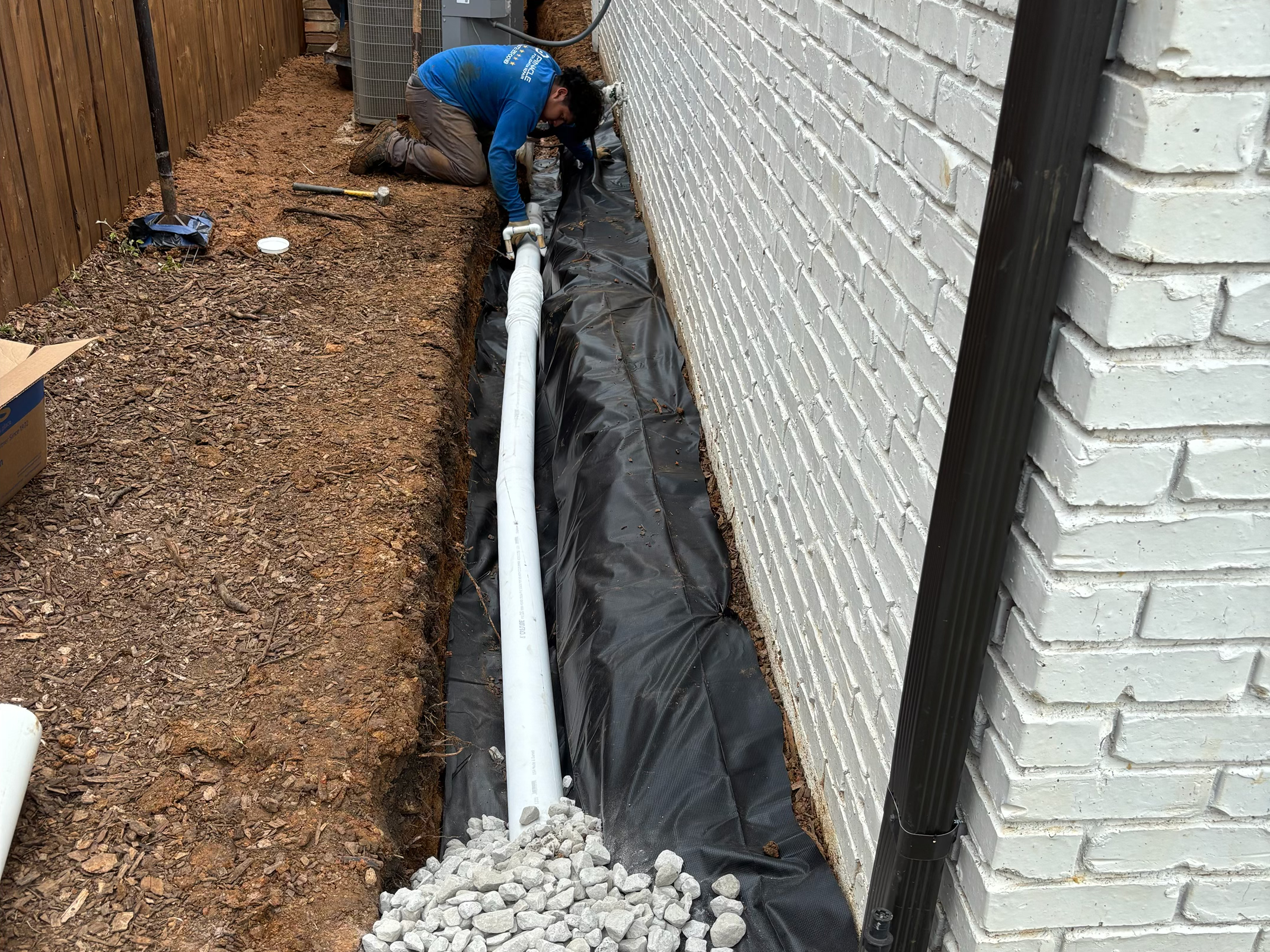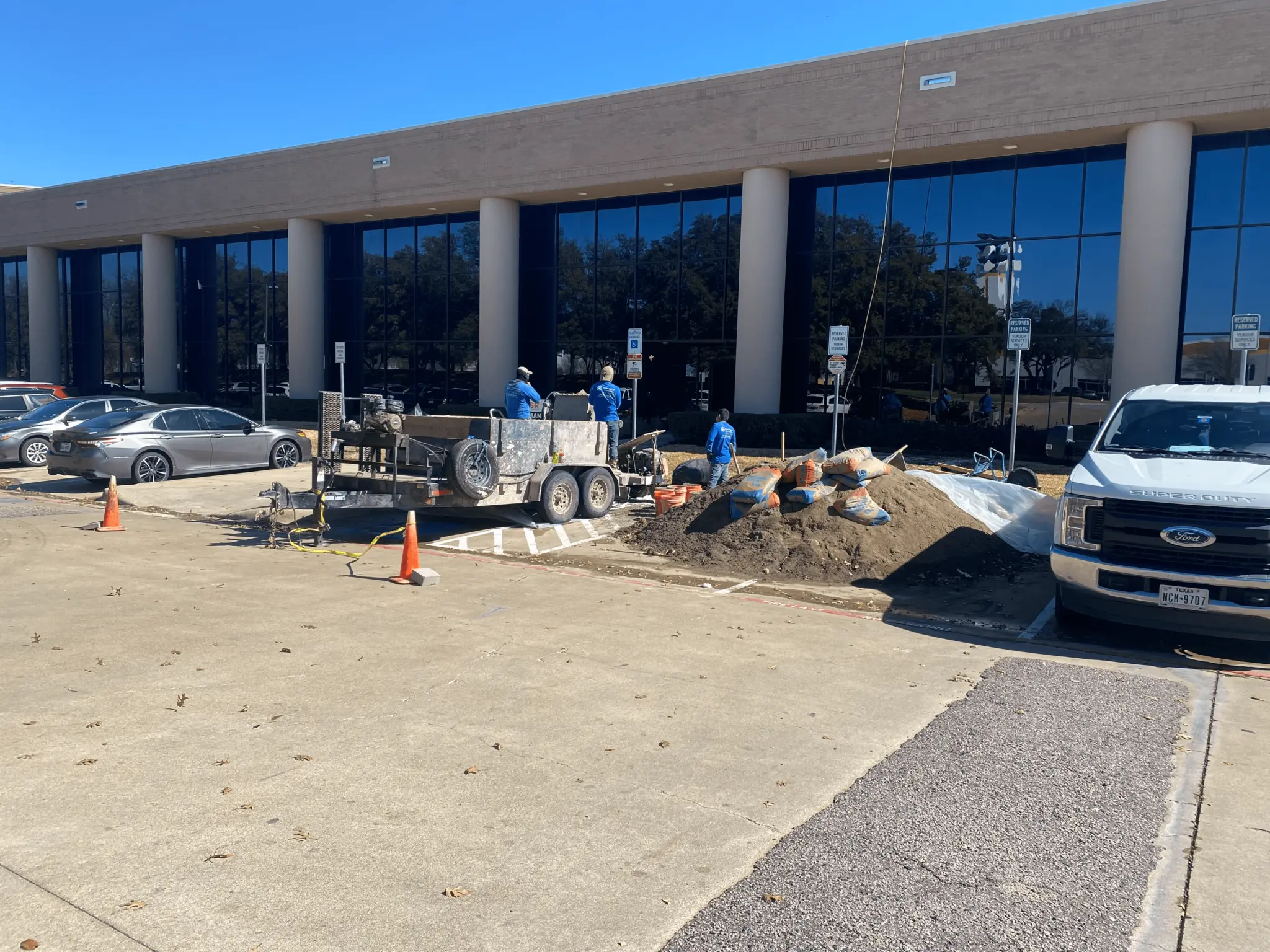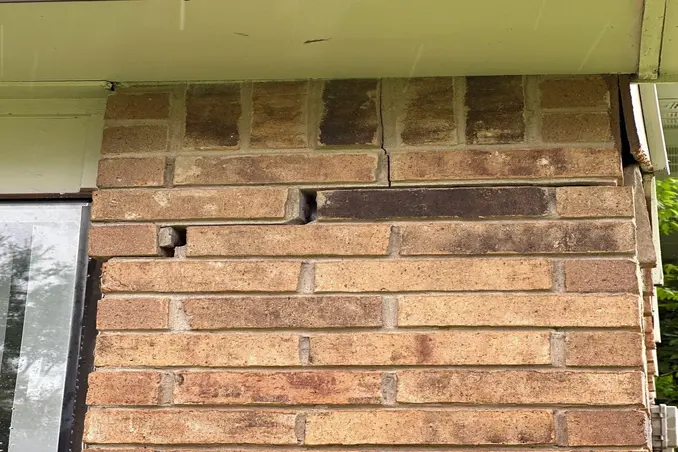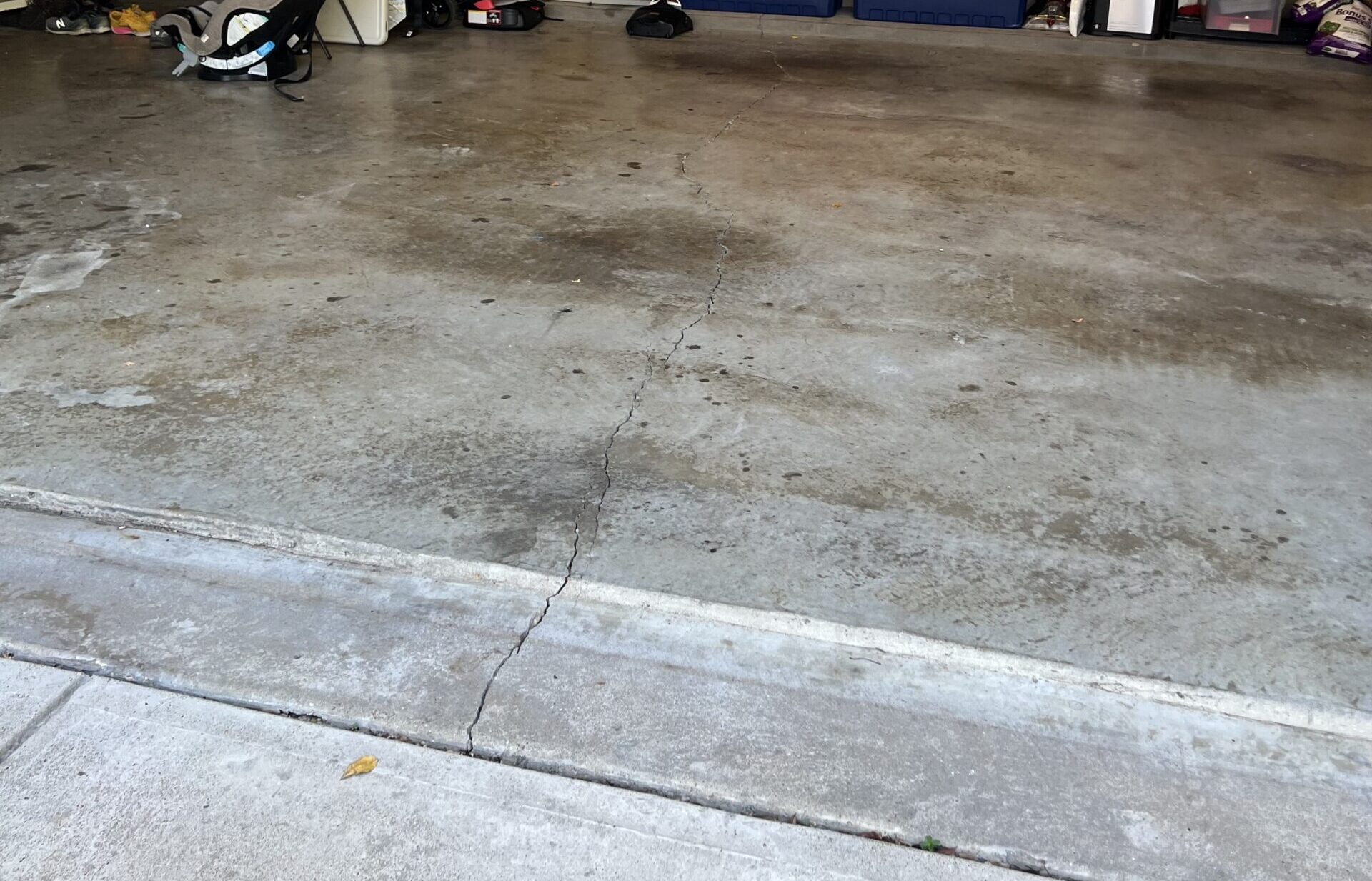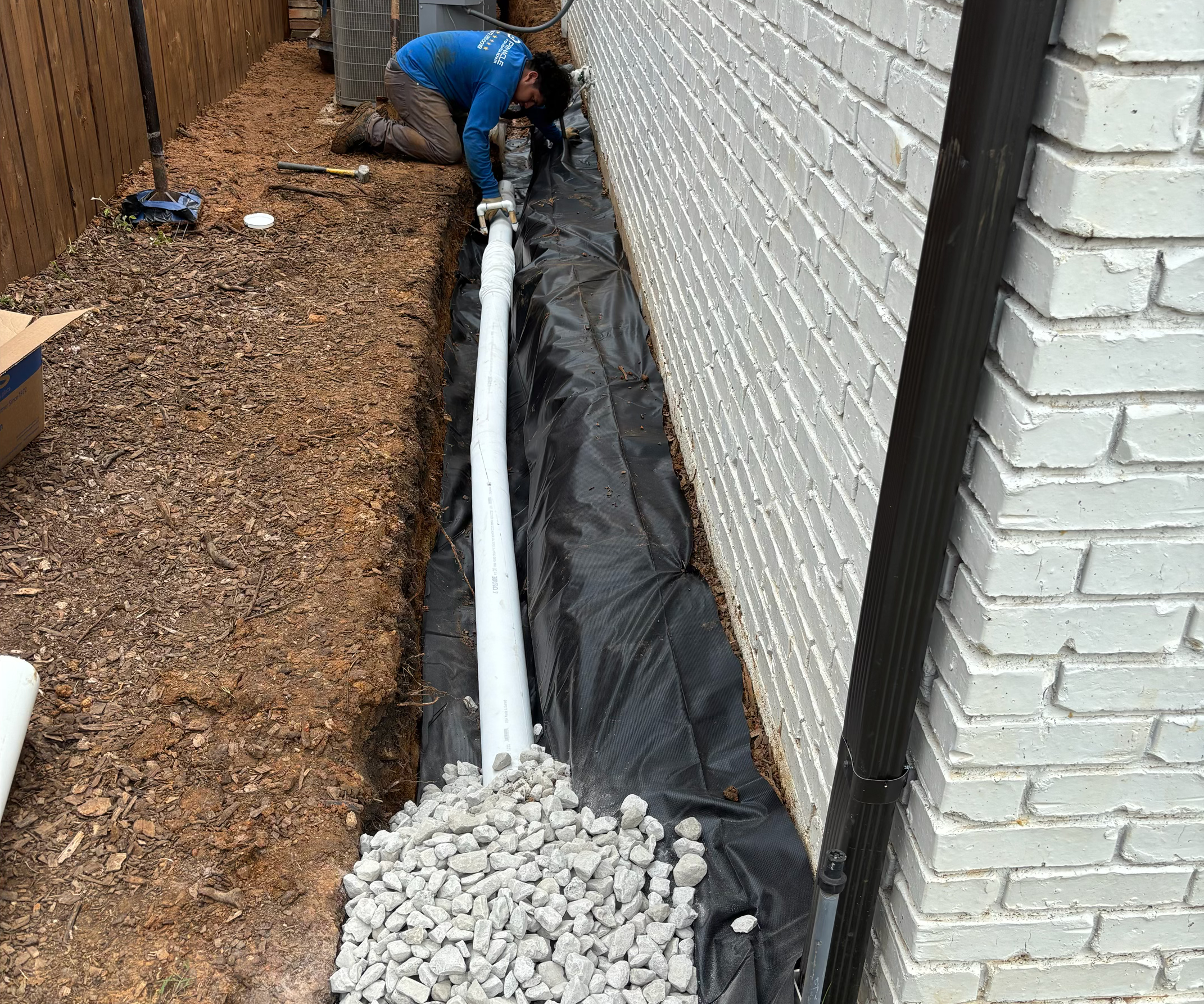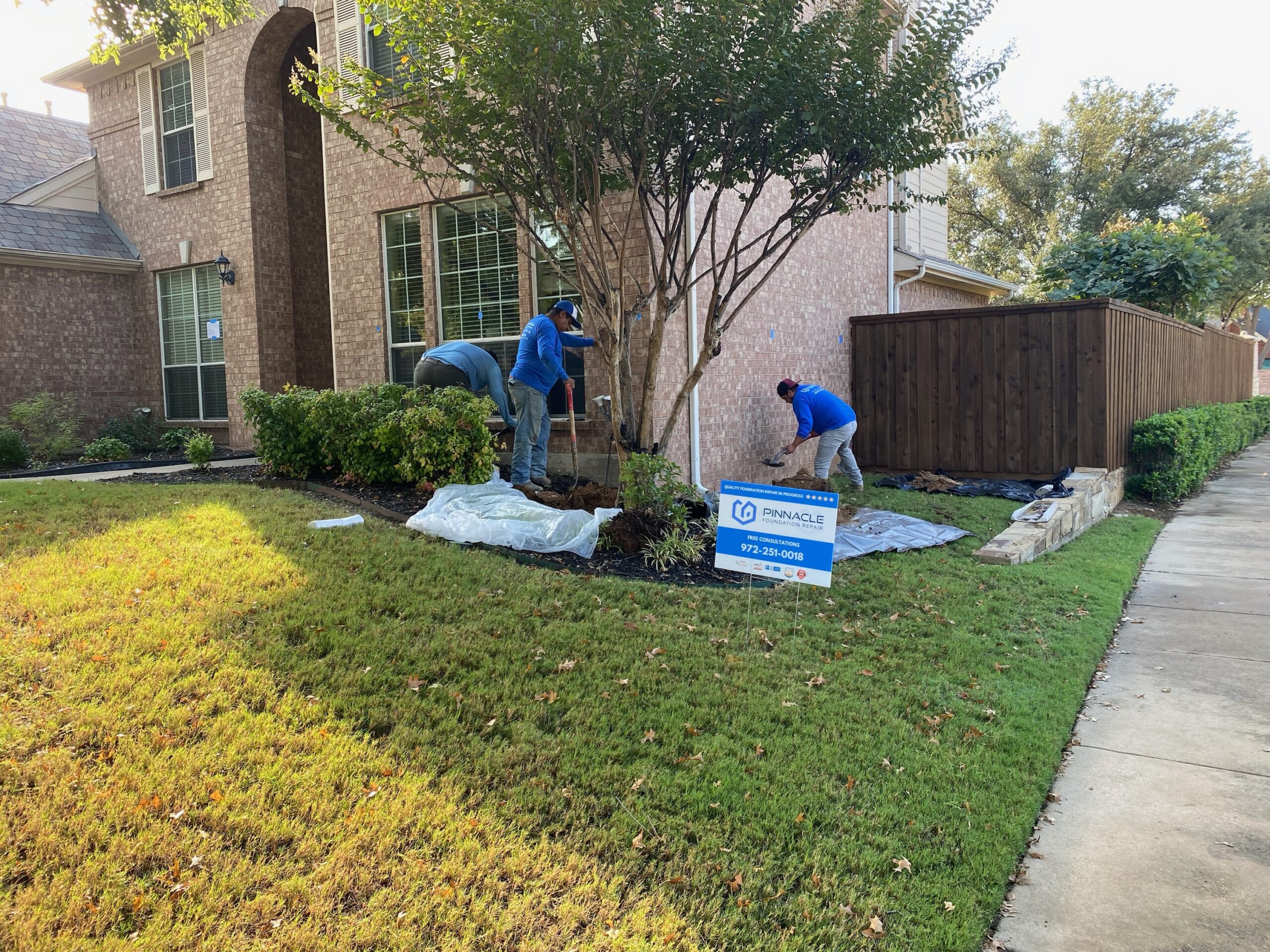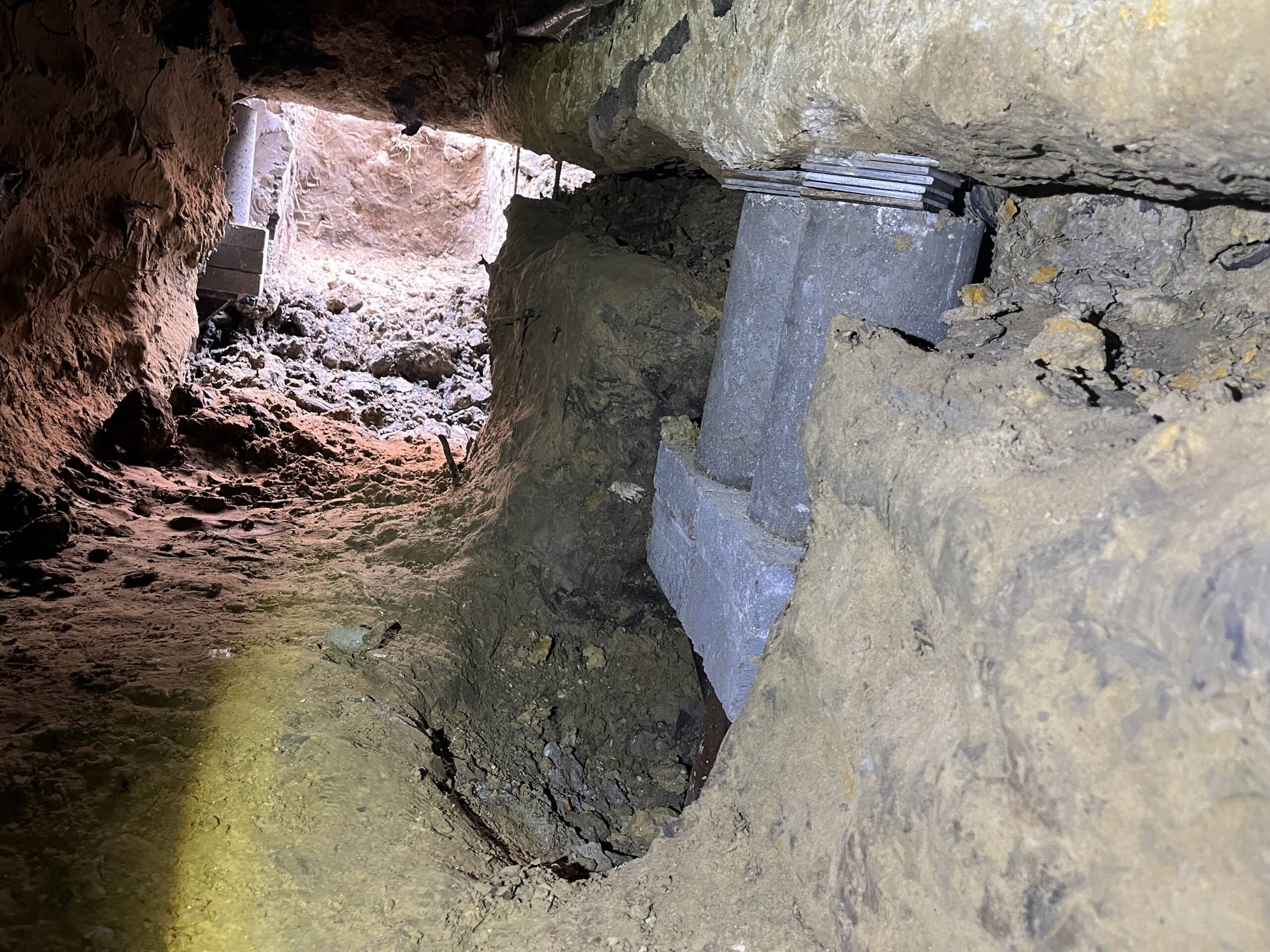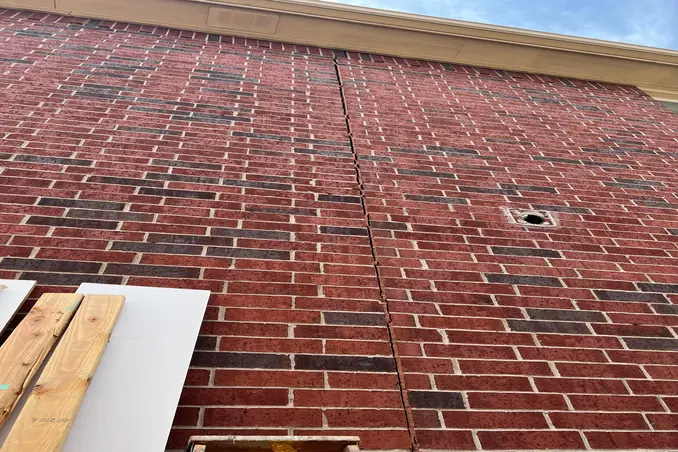Dealing with drainage problems around your home? It’s a common headache that often leads to foundation issues. Whether you’re trying to prevent future problems or simply sick of the swampy mess surrounding your house, you’re in the right place for solutions.
At Pinnacle Foundation Repair, we’ve seen it all. With over 20 years of experience, we know just how crucial it is to get the drainage right to keep your foundation solid.
Left unchecked, pooling water around your home can wreak havoc on your foundation by eroding soil and causing cracks that lead to water seepage into your home or crawl space. That’s a recipe for disaster. If you are not draining excess water from around your home, then your foundation and structure are at greater risk of being damaged.
But don’t worry, we’re here to help you take charge. We’ll walk you through some practical steps to show your drainage system some love and protect your foundation. While these foundation drainage fixes might not solve all your foundation woes overnight, they’re essential for keeping your home in tip-top shape (and most importantly, dry inside!)
Grade the soil away from your foundation
First off, make sure the ground around your home’s foundation slopes gradually away from the house – this is a crucial (and easy) step in keeping your foundation safe from water damage. When you grade the soil properly, it helps to channel water away from the foundation instead of letting it pool around the walls.
This basic adjustment can make a big difference in preventing issues like foundation cracks, settling, and moisture creeping into your crawl space over time. Plus, it helps to keep the soil around your foundation stable, preventing erosion that could compromise the structure’s support.
At Pinnacle, we suggest grading the ground with a 5-degree downward slope away from your foundation. This angle guarantees that water has a straightforward route to flow away from your home. Also, don’t use sand or mulch if you need to fill in dips in the ground – only use high quality topsoil with excellent drainage.
If you have a concrete slab foundation, make sure there’s at least a 4 inch height gap between where the soil touches your foundation and your siding/brick exterior wall starts. (Meaning, you should always be able to see at least 4 inches of your slab foundation all around your home). This separation helps protect against rotting siding, and also blocks termites, ants, and other critters from easily accessing your home.
Install Gutters and Downspouts
Gutters aren’t just for redirecting rainwater – they’re vital for your home’s well-being. They prevent water from pooling around your home’s foundation, reducing soil erosion and potential structural damage. In areas with clay soil like Texas, where soil can expand significantly when wet, gutters play a vital role in preventing these natural forces from weakening your home over time.
If you don’t have gutters, now’s the time to install them, especially if you’re noticing standing water around your home after rain. In Texas, gutters need to be made from durable materials that can handle the hot and humid climate, as well as occasional storms with heavy rainfall and hail. Homeowners can pick steel, vinyl, or even copper gutters, but at Pinnacle we recommend choosing aluminum gutters – they’re durable, resistant to rust, and low-maintenance. If you need gutter installation, just let us know and we can refer you to one of our trusted local partners.
If you already have gutters installed on your home, make sure they’re in good shape by cleaning them out regularly and ensuring proper water flow. Neglected gutters can lead to water damage and other issues, so it’s essential to keep them well-maintained. By taking care of your gutters, you’re protecting your home from potential problems down the line.
Another tip we recommend at Pinnacle is to extend your downspouts at the base of your gutters. Downspouts often empty water too close to your foundation, which isn’t ideal for its health. Extending them to release water about 3-4 feet away from the base of your foundation can help a lot. This prevents clay soil from getting too soaked, easing stress on your home. Optionally, adding underground drain lines keeps things looking neat while also keeping your foundation safe.
Install Drains
One common mistake is not having enough drains around your home. People often forget about drains altogether, letting water accumulate around the foundation. This can lead to soil expansion and put pressure on the foundation walls, causing serious damage. To avoid this, it’s important to install a drainage system to get rid of excess water effectively. If you need help with this or want some advice, get in touch with us for a recommendation.
Another mistake is neglecting drain maintenance. Regular checks can prevent safety hazards and ensure your drains are working efficiently. Forgetting to maintain drains can lead to blockages, causing water to back up and worsen drainage problems. So, don’t forget to schedule regular maintenance checks every 6 months (especially before the spring rains!) to keep your drainage system running smoothly.
Surface Drains
Surface drains are a handy tool in managing water flow and preventing pooling in unwanted areas. Unlike natural slopes or ditches, surface drains are man-made structures strategically positioned to handle larger volumes of water effectively. These drains serve as the collection point for water runoff, directing the collected water away from your home.
At Pinnacle, our surface drains are designed to steer water away from your home’s foundation. Each drain features a low-profile catch basin, measuring 12 inches by 12 inches, set slightly below ground level. These basins connect to 4-inch PVC lines buried about a foot beneath the ground that connect them to other drainage systems, such as street gutters.
We make sure there’s a gentle slope in the grading to encourage water flow, which prevents any pooling near your foundation. Plus, our drain system easily accommodates any nearby gutter downspouts, allowing rainwater runoff to flow away effectively.
French Drains
If your area is prone to flooding or has a low surface area, you might need a French drain to protect your foundation. Despite their simple appearance – just a pipe covered in gravel or rocks – French drains are intricate systems designed to handle subsurface water effectively.
Installed with a gentle 1% slope and typically starting at a depth of 36 inches, these drains ensure water moves away from your foundation, even during heavy rain. The drain itself comprises a perforated 4-inch PVC line, often lined with a geotextile fabric filter in sandy or silty soil areas. French drains direct water downhill, either releasing it at a specific point or connecting to another underground drainage system.
Sump Pumps
If all other gravity-led drainage options have failed you, or you are still dealing with pesky drainage issues under your house, the last resort is to install a sump pump.
A sump pump is a mechanical system that’s designed to catch excess water in a basin and then pump it out from beneath your home. When water refuses to cooperate with gravity, a sump pump can effectively move water from areas where it’s trapped, such as deep crawl spaces, or where alternative drainage options are limited.
Something to consider is that this pump does need its dedicated electrical circuit, which adds slightly to the overall cost of installation.
Protect Your Home’s Foundation with Effective Drainage
Keep your home’s foundation strong and free from water damage with these effective drainage solutions. By installing gutters, drains, and grading your yard properly, you can prevent water damage and maintain your home’s integrity.
At Pinnacle Foundation Repair, we understand the importance of a solid foundation. That’s why we offer a FREE inspection for all your foundation needs. Don’t wait until it’s too late – contact us today if you have any issues or questions about your home’s foundation to ensure your home stands strong against the elements for years to come.

